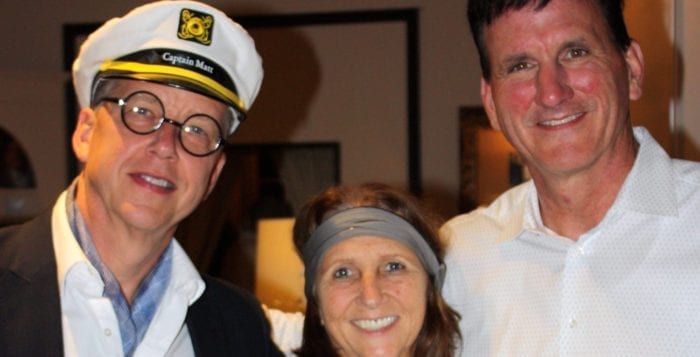Hint — it’s not only about weight
By David Dunaief, M.D.

What causes Type 2 diabetes? It would seem like an obvious answer: obesity, right? Well, obesity is a contributing factor but not necessarily the only factor. This is important because the prevalence of diabetes is at epidemic levels in the United States, and it continues to grow. The latest statistics show that about 12.2 percent of the U.S. population aged 18 or older has Type 2 diabetes, and about 9.4 percent when factoring all ages (1).
Not only may obesity play a role, but sugar by itself, sedentary lifestyle and visceral (abdominal) fat may also contribute to the pandemic. These factors may not be mutually exclusive, of course.
We need to differentiate among sugars because form is important. Sugar and fruit are not the same with respect to their effects on diabetes, as the research will help clarify. Sugar, processed foods and sugary drinks, such as fruit juices and soda, have a similar effect, but fresh fruit does not.
Sugar’s impact
Sugar may be sweet, but it also may be a bitter pill to swallow when it comes to its effect on the prevalence of diabetes. In an epidemiological (population-based) study, the results show that sugar may increase the prevalence of Type 2 diabetes by 1.1 percent worldwide (2). This seems like a small percentage; however, we are talking about the overall prevalence, which is around 9.4 percent in the U.S., as we noted above.
Also, the amount of sugar needed to create this result is surprisingly low. It takes about 150 calories, or one 12-ounce can of soda per day, to potentially cause this rise in diabetes. This is looking at sugar on its own merit, irrespective of obesity, lack of physical activity or overconsumption of calories. The longer people were consuming sugary foods, the higher the incidence of diabetes. So the relationship was a dose-dependent curve.
Interestingly, the opposite was true as well: As sugar was less available in some countries, the risk of diabetes diminished to almost the same extent that it increased in countries where it was overconsumed.
In fact, the study highlights that certain countries, such as France, Romania and the Philippines, are struggling with the diabetes pandemic, even though they don’t have significant obesity issues. The study evaluated demographics from 175 countries, looking at 10 years’ worth of data. This may give more bite to municipal efforts to limit the availability of sugary drinks. Even steps like these may not be enough, though. Before we can draw definitive conclusion from the study, however, there need to be prospective (forward-looking) studies.
The effect of fruit
The prevailing thought has been that fruit should only be consumed in very modest amounts in patients with — or at risk for — Type 2 diabetes. A new study challenges this theory. In a randomized controlled trial, newly diagnosed diabetes patients who were given either more than two pieces of fresh fruit or fewer than two pieces had the same improvement in glucose (sugar) levels (3). Yes, you read this correctly: There was a benefit, regardless of whether the participants ate more fruit or less fruit.
This was a small trial with 63 patients over a 12-week period. The average patient was 58 and obese, with a body mass index of 32 (less than 25 is normal). The researchers monitored hemoglobin A1C (HbA1C), which provides a three-month mean percentage of sugar levels. It is very important to emphasize that fruit juice and dried fruit were avoided. Both groups also lost a significant amount of weight while eating fruit. The authors, therefore, recommended that fresh fruit not be restricted in diabetes patients.
What about cinnamon?
It turns out that cinnamon, a spice many people love, may help to prevent, improve and reduce sugars in diabetes. In a review article, the authors discuss the importance of cinnamon as an insulin sensitizer (making the body more responsive to insulin) in animal models that have Type 2 diabetes (4).
Cinnamon may work much the same way as some medications used to treat Type 2 diabetes, such as GLP-1 (glucagon-like peptide-1) agonists. The drugs that raise GLP-1 levels are also known as incretin mimetics and include injectable drugs such as Byetta (exenatide) and Victoza (liraglutide). In a study with healthy volunteers, cinnamon raised the level of GLP-1 (5). Also, in a randomized control trial with 100 participants, 1 gram of cassia cinnamon reduced sugars significantly more than medication alone (6). The data is far too preliminary to make any comparison with FDA-approved medications. However it would not hurt, and may even be beneficial, to consume cinnamon on a regular basis.
Sedentary lifestyle
What impact does lying down or sitting have on diabetes? Here, the risks of a sedentary lifestyle may outweigh the benefits of even vigorous exercise. In fact, in a recent study, the authors emphasize that the two are not mutually exclusive in that people, especially those at high risk for the disease, should be active throughout the day as well as exercise (7).
So in other words, the couch is “the worst deep-fried food,” as I once heard it said, but sitting at your desk all day and lying down also have negative effects. This coincides with articles I’ve written on exercise and weight loss, where I noted that people who moderately exercise and also move around much of the day are likely to lose the greatest amount of weight.
Thus, diabetes is most likely a disease caused by a multitude of factors, including obesity, sedentary lifestyle and visceral fat. The good news is that many of these factors are modifiable. Cinnamon and fruit seem to be two factors that help decrease this risk, as does exercise, of course.
As a medical community, it is imperative that we reduce the trend of increasing prevalence by educating the population, but the onus is also on the community at large to make at least some lifestyle modifications. So America, take an active role.
References:
(1) www.cdc.gov/diabetes. (2) PLoS One. 2013;8(2):e57873. (3) Nutr J. published online March 5, 2013. (4) Am J Lifestyle Med. 2013;7(1):23-26. (5) Am J Clin Nutr. 2007;85:1552–1556. (6) J Am Board Fam Med. 2009;22:507–512. (7) Diabetologia online March 1, 2013.
Dr. Dunaief is a speaker, author and local lifestyle medicine physician focusing on the integration of medicine, nutrition, fitness and stress management. For further information, visit www.medicalcompassmd.com or consult your personal physician.






 Did you always want to be a writer? Did you study writing in school?
Did you always want to be a writer? Did you study writing in school?







 Fathom Events invites you to join fellow fans for the ultimate watch party — the Jumanji Movie Event -— coming to select theaters nationwide on Sunday, June 10, and Monday, June 11. See the original 1995 “Jumanji” starring Robin Williams followed by the 2017 Dwayne Johnson-led hit sequel, “Jumanji: Welcome to the Jungle,” back-to-back for an action-packed double-feature event that includes a special prerecorded introduction.
Fathom Events invites you to join fellow fans for the ultimate watch party — the Jumanji Movie Event -— coming to select theaters nationwide on Sunday, June 10, and Monday, June 11. See the original 1995 “Jumanji” starring Robin Williams followed by the 2017 Dwayne Johnson-led hit sequel, “Jumanji: Welcome to the Jungle,” back-to-back for an action-packed double-feature event that includes a special prerecorded introduction.

 Isn’t she precious? This is Lauren, a 6-month-old shepherd mix cutie waiting patiently for you at Kent Animal Shelter. Rescued from a high-kill shelter in Texas, this puppy is full of energy and would love to find a home with a nice big yard to run and play in. She would do great with an active family. Lauren comes spayed, microchipped and is up to date on all her vaccines. Come meet her today!
Isn’t she precious? This is Lauren, a 6-month-old shepherd mix cutie waiting patiently for you at Kent Animal Shelter. Rescued from a high-kill shelter in Texas, this puppy is full of energy and would love to find a home with a nice big yard to run and play in. She would do great with an active family. Lauren comes spayed, microchipped and is up to date on all her vaccines. Come meet her today!


